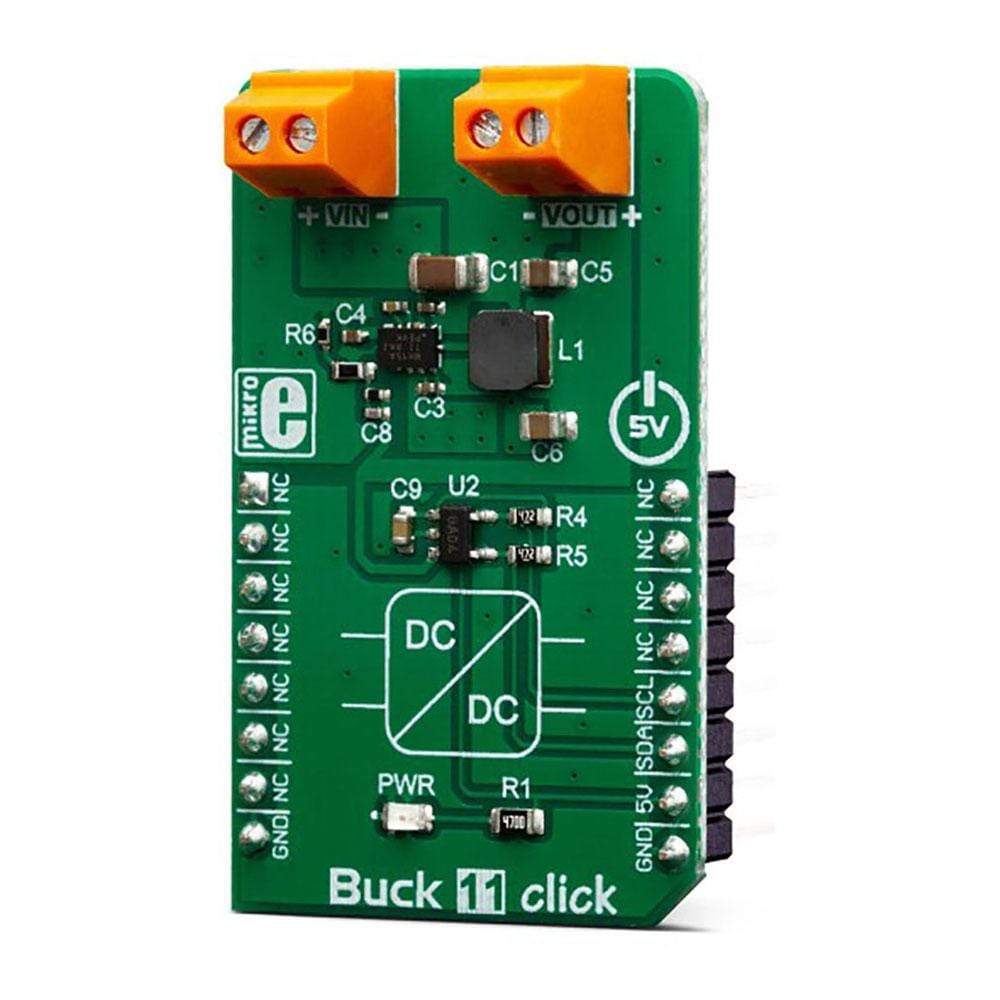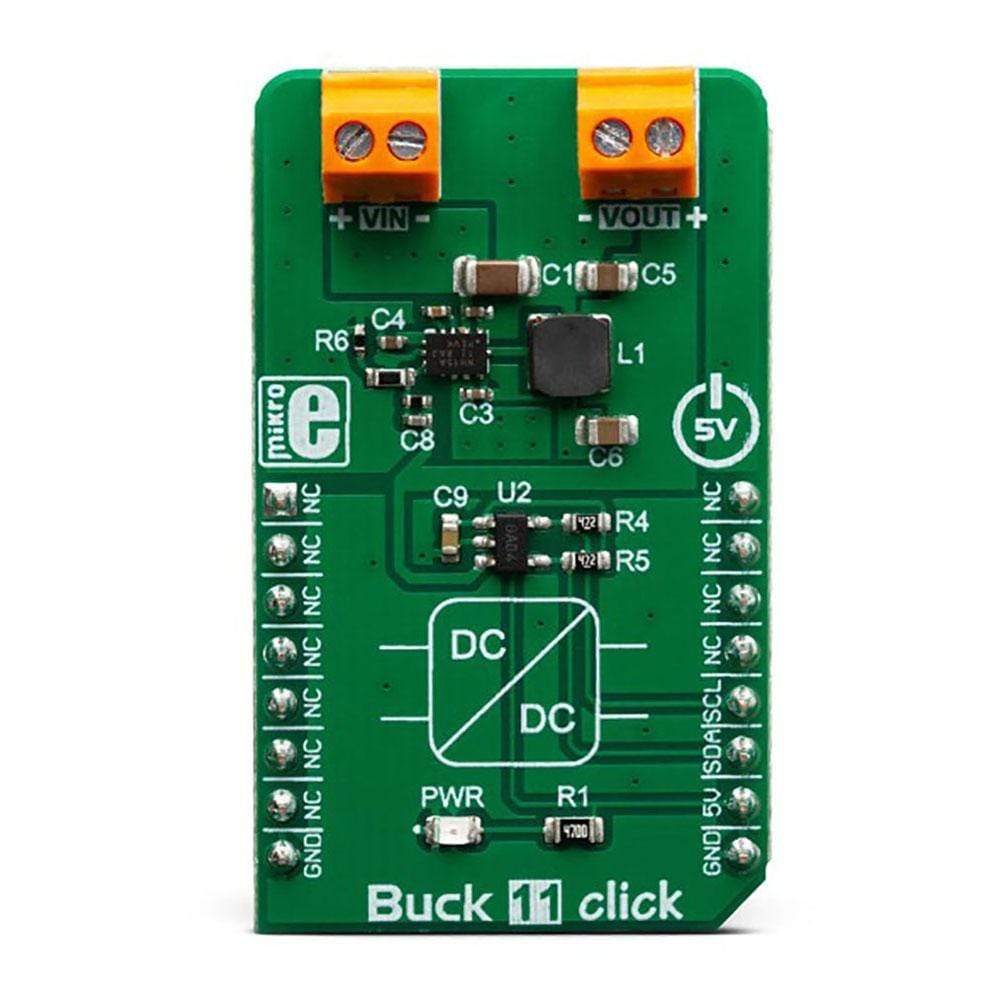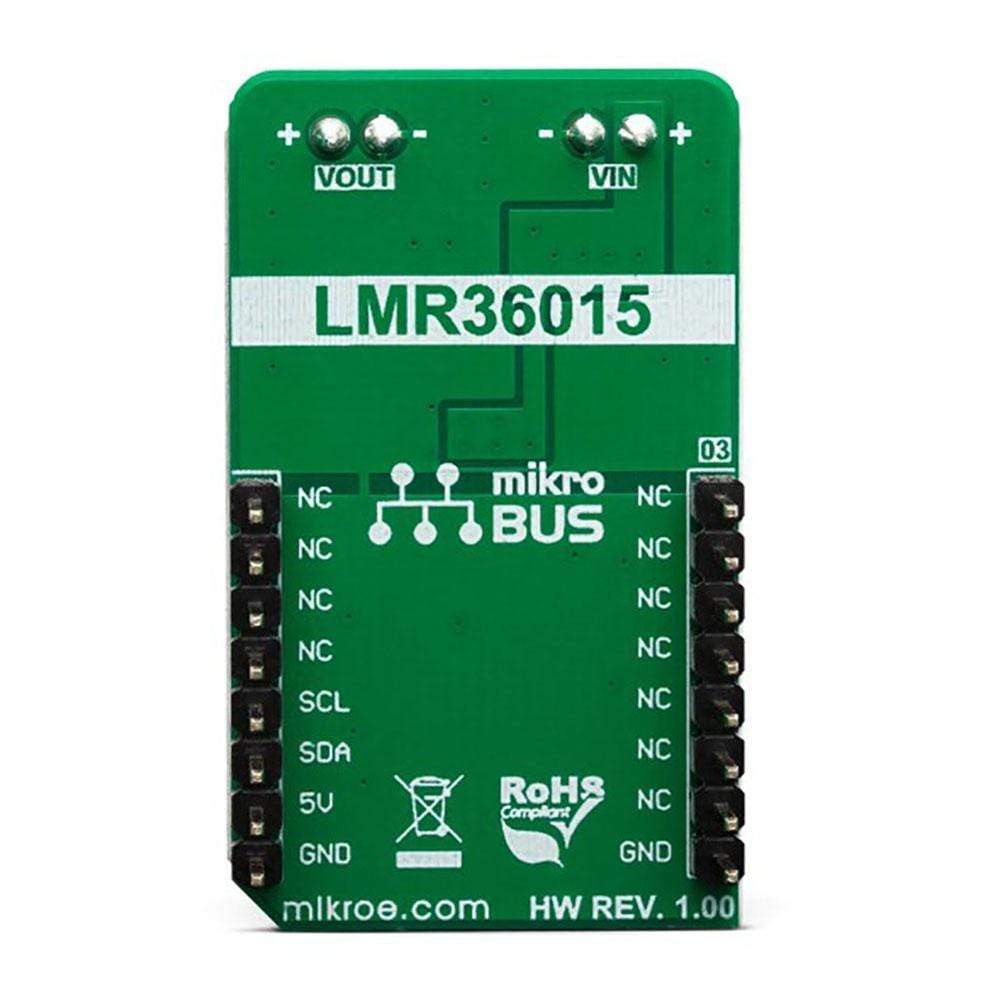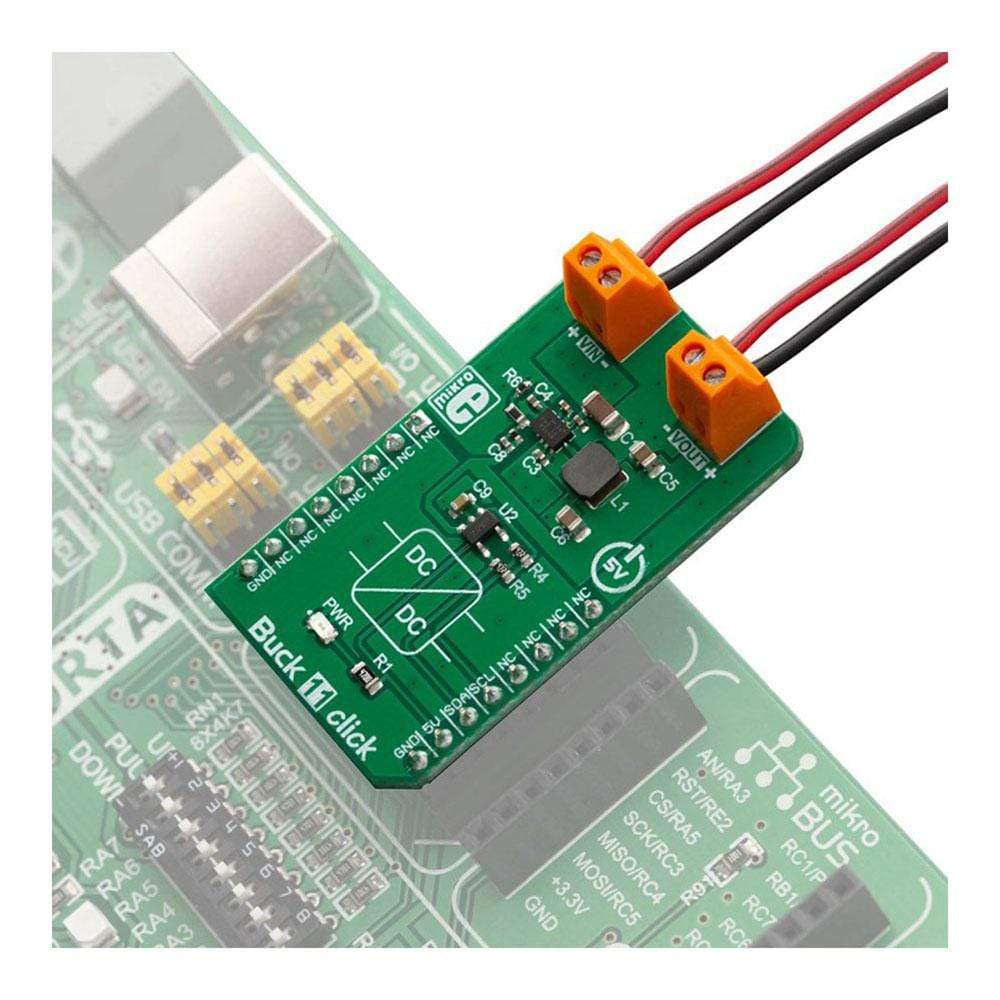



Overview
The Buck 11 Click Board™ is a high-efficiency step-down converter that provides 3.3V on its output, derived from the connected power supply voltage, in the range from 4.2V to 60V. Buck 11 Click Board™ is based on the LMR36015, a highly efficient DC-DC step-down converter. In addition, the Buck 11 Click Board™ offers to monitor the stability of the output voltage by employing an additional A/D converter circuit. Due to its high efficiency, LMR36015 allows the Click Board™ to deliver up to 1.5A of current efficiently. The efficiency for lighter loads is optimized by using the PFM mode. It features a Hot Rod™ package which enables a low noise performance, high efficiency, and compact size.
Downloads
Le Buck 11 Click Board™ est un convertisseur abaisseur à haut rendement qui fournit 3,3 V sur sa sortie, dérivée de la tension d'alimentation connectée, dans la plage de 4,2 V à 60 V. Le Buck 11 Click Board™ est basé sur le LMR36015, un convertisseur abaisseur CC-CC à haut rendement. De plus, le Buck 11 Click Board™ permet de surveiller la stabilité de la tension de sortie en utilisant un circuit convertisseur A/N supplémentaire. En raison de son rendement élevé, le LMR36015 permet au Click Board™ de fournir efficacement jusqu'à 1,5 A de courant. L'efficacité pour les charges plus légères est optimisée en utilisant le mode PFM. Il est doté d'un boîtier Hot Rod™ qui permet des performances à faible bruit, un rendement élevé et une taille compacte.
| General Information | |
|---|---|
Part Number (SKU) |
MIKROE-3438
|
Manufacturer |
|
| Physical and Mechanical | |
Weight |
0.02 kg
|
| Other | |
Country of Origin |
|
HS Code Customs Tariff code
|
|
EAN |
8606018714858
|
Warranty |
|
Frequently Asked Questions
Have a Question?
Be the first to ask a question about this.




